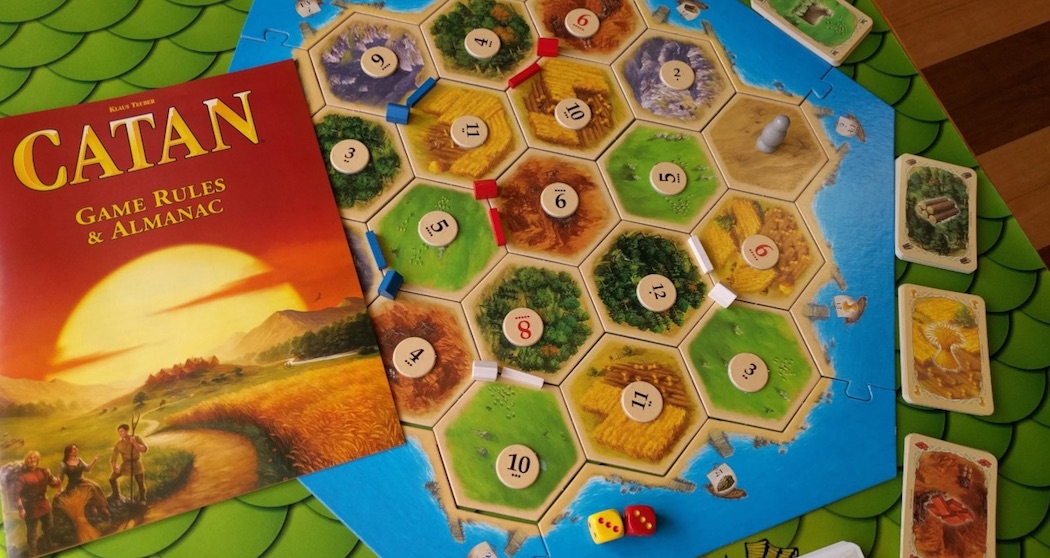
The world has changed so much. Even in terms of games. We have so many different handheld devices that allow us to play electronic games for hours.
It’s easy. It’s convenient. It’s fun.
But before we had all of these devices we had board games. We still have them. Well I hope we still do.
They are great for kids of all ages. Here are my top 15 and the reasons why:
15. Bob Ross Speed Colors
For 2 - 5 Players, Ages 6+
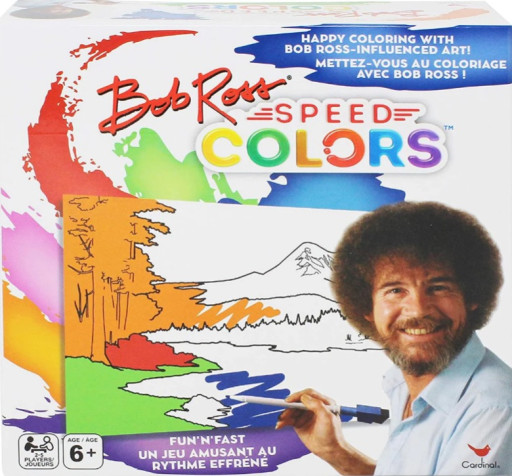
The closest some of us will get to being an artist.
Bob Ross Speed Colors Play:
Bob Ross Speed Colors Play
Bob Ross was a painter, art teacher and a TV host. He hosted a show called The Joy of Painting. He was so good and made you feel as though you could paint just like he could. Even if you couldn’t.
But with this game you can. Kind of.
In Bob Ross Speed Colors you look at a Bob Ross painting and try to memorize the colors used. Then you and the other players flip your card over. The same drawing is there but in black and white.
Your job is to try and remember which colors he used and where on the painting you saw them. Then as fast as you can you grab a whiteboard marker and color your painting like his. With the right colors in the right areas before the other players do the same on their own cards.
The faster you are and the more accurate, the more points you score.
Here’s a twist: You can select markers and change the caps for the next play. Players have to pay attention to the marker they select!
Here are 5 reasons why this game is great for kids:
- For younger children it helps them to identify and remember colors.
- This game is also great at helping children develop good memory skills.
- It requires no artistic skill so it’s super easy for everyone to play. Even young children.
- This game is also a great way for kids to spend time with the family building bonds and strengthening relationships.
- Bob Ross Speed Colors is great for kids since it builds social skills. Children learn to share since there is only one of each color marker in the game.
14. Operation
1+ Players, Ages 6+
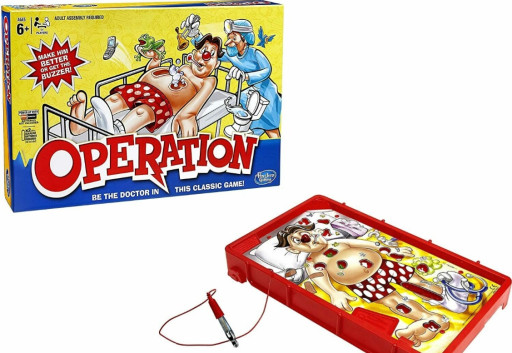
Is there a doctor in the house?
Operation Play:
How To Play Operaion
Operation is a battery-operated game. Your patient Sam Cavity has a number of ailments. Things ranging from a sprained ankle to a Charlie Horse.
You select a “doctor” card with a certain ailment on it. Your job is to operate on Sam by removing an object from that body part with a pair of tweezers.
If you’re successful you earn the amount of money shown on the card. But if you touch the wrong thing Sam’s nose buzzes and turns red. Then it’s another player’s turn to operate on Sam.
When all body parts have been ‘operated’ on the game ends. Whoever has the most money wins.
You should buy this game for your kids because:
- It helps younger children identify and remember parts of the body.
- This game helps with hand eye coordination. Good hand eye coordination helps kids do things like pour liquids without spilling and catch a ball.
- Operation can also help children with their focus. In order to be successful they need to concentrate on the task they are given.
- This game can also help kids build fine motor skills in their fingers and wrists when they use the tweezers. Strong fine motor skills help kids do activities like hold a pencil properly and turn dials and doorknobs with ease.
- This game is great for developing language skills. As children play you should encourage them to talk about what they are doing, which body parts they are working on etc.
13. Planet
For 4 players, Ages 8+
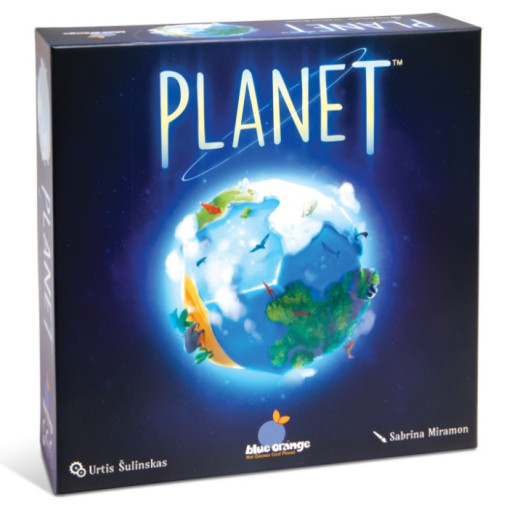
Imagination out of this world.
Planet Play:
How To Play Planet
Planet is a great game with lots of interesting game pieces for play.
The goal of the game is to create the best ecosystem for animal life. How is this done?
Each player has a 12-sided 3D planet core. Over twelve rounds, each player takes turns selecting tiles which fit into the sides of their 3D core. These tiles show landscapes like oceans, deserts and mountains.
Your job is to fill your planet core with the best combos of landscapes. You also have objectives to complete as you build your ecosystem. There is Wildlife to get but they need the correct landscapes in order to thrive.
Each player’s job is to build natural habitats as they complete objectives and build the most populated ecosystem.
This game is great for kids because:
- It teaches them to care for the planet - animals, plants and the whole planet in general.
- This game is also great at teaching kids about the different kinds of landscapes across the world. You can take it further and help them find real life examples of those landscapes on a world map.
- The game helps build critical thinking skills. Kids need to think about the best place to lay their tiles to help them achieve their goals and build the best ecosystem.
- It teaches them responsibility. Planet has different pieces to be sorted and shuffled. They need to be replaced in the box when the game ends. Giving kids the responsibility of taking care of the pieces will help them to understand they can be responsible for other things like packing groceries or tidying their rooms.
- Planet helps with developing social skills. Kids can learn from early how to share and take turns as they play this game.
12. Scrabble
For 2 - 4 players, Ages 8+
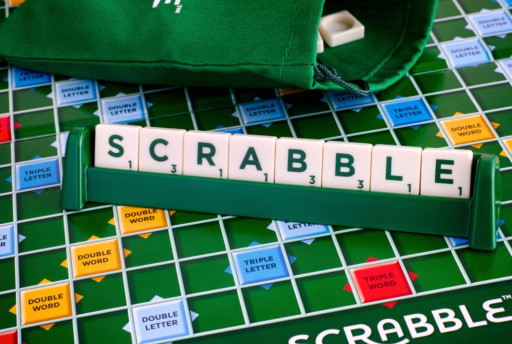
At least it isn’t a Math game. Seven tiles, please and thanks.
Scrabble Play:
How to Play Scrabble
Scrabble is an oldie but a goodie. And even though you can play online, for kids a board game is best.
Scrabble is a word game played on a square board. The board has a 15 x 15 grid with cells or squares. Players select 7 letter tiles at a time and take turns making words on the board. After each turn, players make sure they have 7 tiles again for their next turn.
One tile fits into one square and once a word has been played it cannot be removed. Whenever a word is played it must share at least one letter with a word that was played already.
Players continue to make words until one player has used all of his tiles. Or if no other tiles can be placed to make words.
Based on where the tiles are placed, you can earn double or triple points on letters or words.
Here are 5 reasons why Scrabble is great for kids:
- It helps them with their Spelling. Kids learn how to spell words they know or new words. They also begin to learn what combination of letters can make words and which ones can’t.
- Kids can also learn the meanings of new words and increase their vocabulary.
- This game also helps them with their reading and writing. They can start to use the words they learn in their writing which will also improve their reading skills.
- Scrabble helps to build critical thinking skills. Since some letter tiles give bonuses, kids begin to realize that certain plays give their opponents the chance to get a big score on their next play. This helps them to use strategy when it's their turn.
- Scrabble helps to build fine motor skills. Letter tiles are small. Those little fingers need to shuffle them in the bag, pick them up, put them on the tile rack and then place them on the board.
11. What Do you Meme? Family Edition
For 3+ Players, Ages 8+
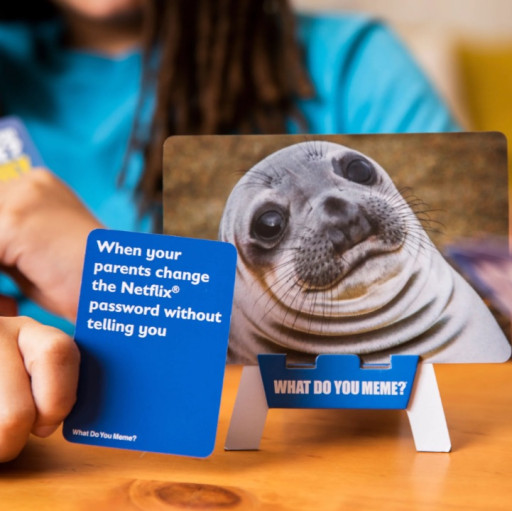
You heard what I said!
What Do you Meme? Family Edition Play:
How To Play What Do you Meme? Family Edition
This is a great family game (The Family Edition) for all ages and any number of players.
Players are dealt cards with captions. For each round there’s a judge who selects a card with a picture. The other players look through their caption cards and select one that they think best fits the picture.
Once everyone has selected their card the judge shuffles them so that it’s anonymous. Then he turns each caption over and chooses the one which he thinks creates the best meme with the pic.
The winning caption gets the pic and is the champion of the round.
You should buy this game for your kids because:
- It helps them with their reading skills. They need to be able to read the captions which they have selected.
- This game helps children develop language skills. They need to speak when they are the judge. They read captions aloud, say which ones they like and why.
- This game encourages creativity. Kids know and understand memes. But instead of looking for other people’s memes online they have the chance to make their own.
- Lots of people can play together. With large families only a certain number of people can play at once in most games. But with this game everyone can play at the same time which is super fun.
- It helps build strong relationships as family members laugh and build memories together.
10. Scattergories
For 2 - 6 Players, Ages 12+
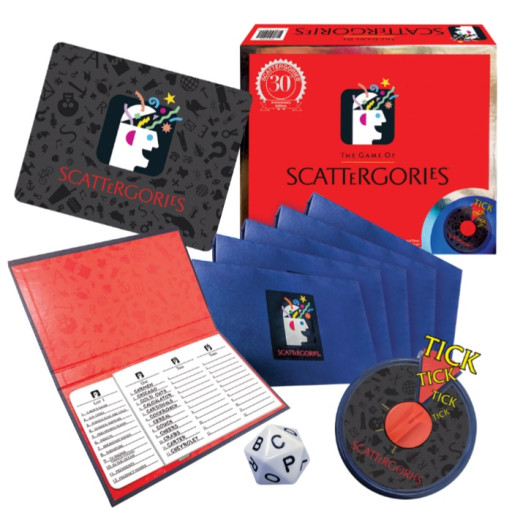
Put your thinking caps on.
Scattergories Play:
How To Play Scattergories
This is a great word game for older kids.
Scattergories is a fun game which forces you to think hard and think fast. Each player gets a category card with columns of Lists. Each List has 12 answer spaces.
You roll that big die and look at the letter selected. Players must complete the chosen list where each answer must begin with that letter. All before time runs out. You get points when you have an answer that another player doesn’t have.
The player with the most points after the 3 lists are completed is the winner.
Here are 5 reasons why this game is great for kids:
- The game can be played many different ways so it doesn’t get old. You can keep the same list and change the letter 3 times. You can use 3 different lists all with the same letter. You can play faster rounds.
- The game encourages creativity. You can get your kids to think of categories that they can make for their own game.
- Scattergories helps kids build their vocabulary. They can learn new words from other players related to many different categories like School Supplies and Insects.
- It helps with Spelling and Reading as well. As kids write they get to learn letter combinations, word associations, silent letters etc.
- It can build confidence and improve language skills. There are categories where kids can use answers that older family members may not know (like TV Shows and Product Names). They can tell them about current TV Shows and Products, what they are about and where to find them.
9. Pictionary
For 2 Teams, Ages 8+
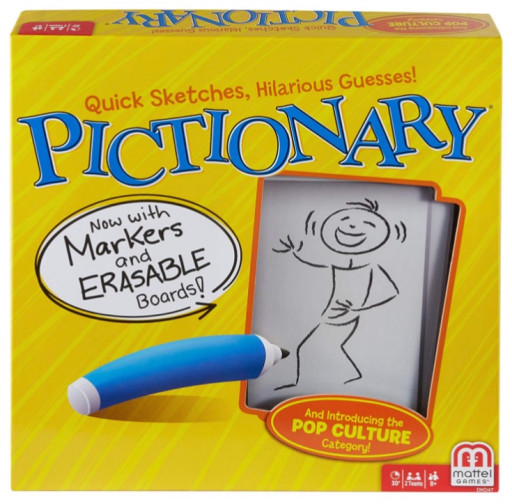
A bellyful of laughs.
Pictionary Play:
How To Play Pictionary
Pictionary is a great board game that should appeal to different types of players.
Note that newer versions have whiteboards with markers for drawing. Older versions use pencil and paper.
Each team takes turns rolling a die and moving around a board with colored squares. The colors tell you what type of picture you need to draw for that round.
There are 5 types of squares on the board and Pictionary cards with a list of 5 words on them. Players must draw the word which matches back with the square the team landed on.
If the team guesses the word correctly in 1 minute or less, they get to roll the die and move around the board again. If no one guesses correctly in the time allowed, the next team rolls the die and plays.
The game has ‘All Play’ squares on it. If any team lands on an All Play Square, both teams select a player to draw. Whichever team guesses correctly first, rolls the die and moves forward on the board.
The first team to reach the last square on the board and guess correctly wins the game.
This game is great for kids because:
- It’s super fun. You can’t draw letters or numbers. You can’t point to objects or make gestures. The limitations make the game enjoyable as you figure out what to draw so that your team wins.
- They get to learn how to work as a team. This game is great for teaching kids how to cooperate with others to achieve a goal.
- The whole family can play together. This helps them to build bonds with their family members as they play and laugh together.
- Age or skill doesn’t determine a winner. In many games older siblings usually beat younger children. In this game young kids can contribute in a meaningful way without feeling pressure from being the youngest or the weakest person on the team.
- It helps build fine motor skills in their fingers, hands and wrists as they roll die, move game pieces and hold the pencil/marker to draw.
8. Sequence
For 2 - 12 Players, but never 5, 7 or 11 Players. Ages 7+
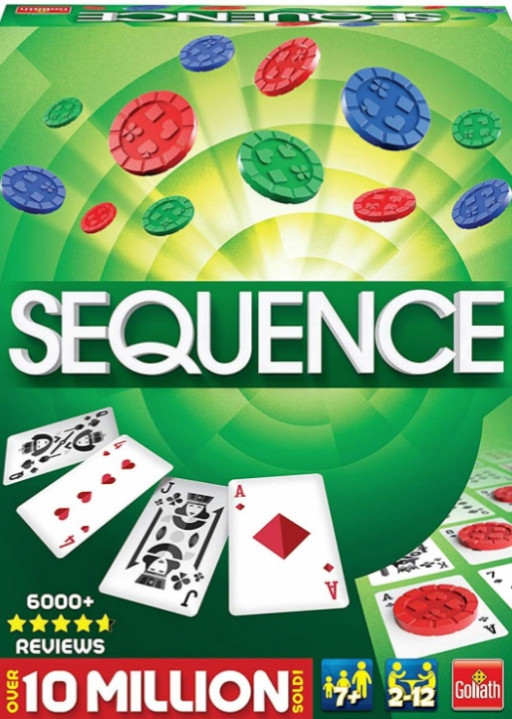
That’s a lot of Sequences right there!
Sequences Play:
How To Play Sequence
The Sequence Board shows the playing cards drawn out in random order and positions.
Each card is positioned twice on the board, except the Jacks. They do not appear on the board at all.
Each player gets a hand of playing cards. You play a card from your hand and then put a colored chip on the board that matches what you played.
The first player or team to get five in a row has a Sequence and wins the round. Whoever has the most required 5-Sequenced rounds wins the game.
But the Jacks are special. You can use the 1-eyed Jacks to remove one of your opponent’s chips and stop them from making a sequence.
You use 2-eyed Jacks like a Wild where you can play any one of your own chips on any card space that’s available.
And speaking of Jacks.
I never realized that some royal suits have 1 eye showing on the face until I played this game.
Did you know that? Go check for yourselves.
Here are 5 great reasons to play this game:
- It is a great strategy game that helps build critical thinking skills. Kids need to make a sequence and figure out how to stop opponents from making sequences.
- This game is great for teaching social skills like taking turns and being patient with others.
- Sequence helps kids develop responsibility. Give them the job of setting up and packing away the pieces.
- The game is great for younger players who need to develop fine motor skills in their fingers, hands and wrists. In Sequence kids can shuffle cards, sort chips by color and play their own chips. These actions help strengthen their finger muscles.
- Sequence helps kids learn to cooperate with other people. When kids play in teams they learn to work with their teammates in order to win.
7. Connect 4
For 2 Players, Ages 6+
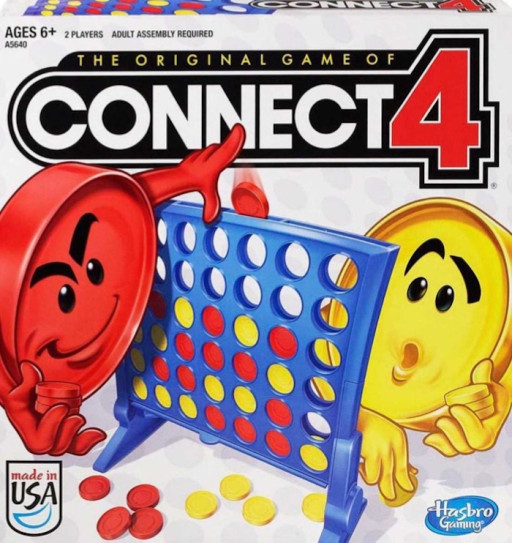
Now that is a game face!
Connect 4 Play:
How To Play Connect 4
Players sit opposite each other with a suspended grid between them. In the traditional game, the grid has 7 columns and 6 rows of ‘holes’ or slots. Each player has colored tokens or discs.
You take turns dropping your colored pieces in the slots. The goal is to form 4 in a row of your own tokens either vertically, horizontally or diagonally. As you try to connect 4 of your own tokens, you have to make sure you stop your opponent from doing the same.
This game is great for kids because:
- It builds critical thinking skills as they use different strategies to win.
- It is great for younger kids in helping them build fine motor skills. As they sort tokens and drop them into the grid their finger muscles get lots of exercise.
- This game helps them to build focus. This can help them concentrate better when given simple tasks to do.
- Connect 4 helps children to develop social skills. They learn to take turns and be patient as they play with other people.
- This game also helps kids with hand eye coordination. They have to be able to gauge the slot they want to use and make sure their hands line up with that column correctly.
6. Monopoly
For 2 - 6 Players; (Or 8 in some versions). Ages 8+
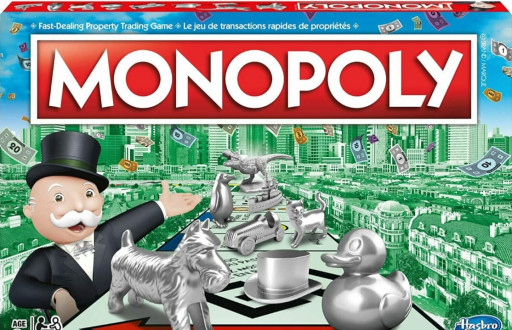
Who runs this town?
Monopoly Play:
How To Play Monopoly
Monopoly is a classic game that has many different teaching elements in gameplay.
The game is played on a board with 40 spaces. They are made up of:
- 22 streets (shown in 8 different sets of colors)
- 4 railroads
- 2 utilities
- 3 Community Chest spaces
- 3 Chance spaces
- 1 Luxury Parking
- 1 Income Tax space
- 4 corners which show a GO space, Jail/Just Visiting, Free Parking and Go To Jail.
Players roll two dice and take turns going around the board buying and trading properties. They can also develop most properties and increase their value by building houses and hotels.
You collect rent from other players who land on your properties. Sometimes you may land on Community Chests or Chance spaces and draw a card which may bring good or bad luck. Tax spaces cause players to lose money.
There are many different versions of Monopoly but the goal is the same in all of them.
Bankrupt your opponents so that you are the richest player at the end of the game.
Here are 5 great reasons to buy this game for your kids:
- It introduces kids to the concept of Economics and how the world works in terms of buying goods and paying for services.
- The game teaches kids responsibility. This game has many pieces: dice, game ‘men’, property cards, Chance cards, Community Chest Cards, money, houses and hotels. They can learn to take care of the pieces and make sure that everything returns to its proper place after play.
- Monopoly helps kids do basic Mathematics. They learn how to add as they collect rent from people. They also learn how to subtract as they pay out rent money and determine what they have remaining.
- This game also helps kids with problem solving and critical thinking skills. Knowing when to build, which properties to build on and what to trade is important. And sometimes knowing when it’s best to just stay in Jail!
- Monopoly teaches kids lots of social skills: how to be a good sportsman, how to take turns and how to share (the dice).
5. Clue: Harry Potter Edition
For 3 - 5 Players, Ages 9+
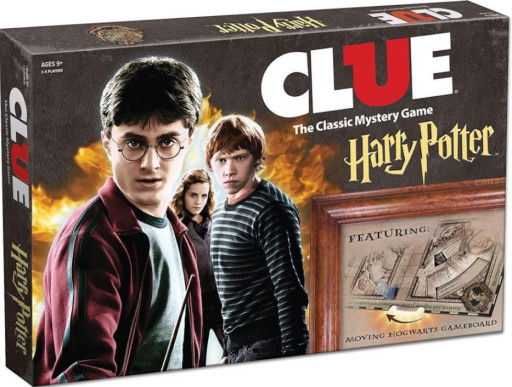
Whodunit?
Clue: Harry Potter Edition Play:
How To Play Clue: Harry Potter Edition
This is a brilliant game inspired by the original Clue game.
A student at Hogwart goes missing. Players take on the identity of either Harry, Hermione, Ron, Luna, Ginny or Neville in order to find out who vanished, what spell or item was used and where the crime took place.
The game has many game pieces including Help cards, Player cards, Suspect tokens, Item tokens, Mystery cards and 2 dice.
This game has a 3D feel. Players can move wheels at each corner to reveal secret passages. Dark Magic may be coming for you. But you can use spells, items and allies from Help cards to protect you.
This keeps the game changing constantly which makes it very interesting and lots of fun.
Players take turns rolling the dice and entering rooms in order to make suggestions about the crime. They eliminate villains, weapons and rooms until they come to the final answer to “WHODUNIT”.
And when you think you have solved the crime, head to Dumbledore’s office to accuse. If you’re right you win the game.
Here are 5 reasons to buy this game for kids:
- It helps them to think critically as they make suggestions and eliminate suspects, weapons and rooms.
- If they love Harry Potter this is yet another area of Harry Potter’s Universe for kids to explore and enjoy.
- This game is great for helping students develop and improve language skills. They make suggestions to other players as they role-play at being Detectives.
- The game helps kids with their Reading and Comprehension. They have to read the cards which they select and figure out what to do with the information.
- It also teaches them to take turns, share and be patient. This helps develop good social skills in kids.
4. Ticket To Ride
For 2 - 5 Players, Ages 8+
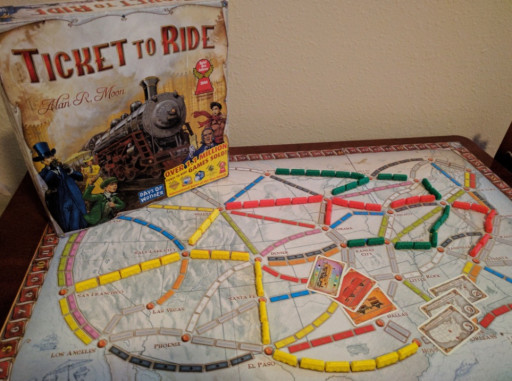
All aboard!
Ticket To Ride Play:
How To Play Ticket To Ride
Ticket to Ride is a great board game for the family.
It’s played on a board that shows a 20th century map of North America. There are other versions for other countries such as Europe, Germany and Nordic Countries.
In the US version, North American cities are laid out on a board with pictures of different train routes connecting them.
At the start of play, you have Destination cards which show you the routes you need to connect. Each player chooses a color for their train routes and takes turns to perform one of 3 actions:
- You pull a train card.
- Claim a train route.
- Get another Destination Card.
This is a game of strategy as you plot how to connect your routes. You can also stop other players from making theirs but this reduces the number of trains that you have to make your own. It’s all about planning and strategy.
You earn points when you create longer routes. You also get extra points at the end of the game if you have the longest train route.
You should buy this game for your kids because:
- It teaches them about the geography of different cities in the world.
- Kids also get to learn a bit of history as they discover ways of transport that people used before technology became what it is today.
- They get to develop critical thinking skills as they plan and strategize their routes.
- It has many cards and little pieces that can help build finger muscles as they play.
- The game teaches kids to be a good sportsman when things don’t go their way.
3. Chess
For 2 Players, Ages 8+
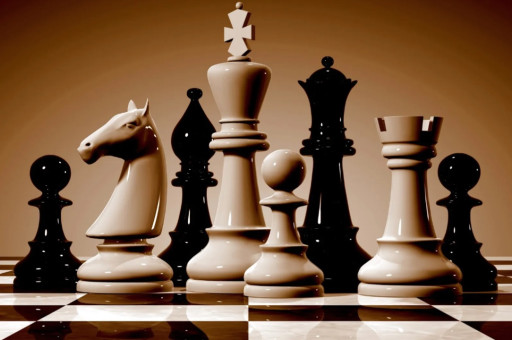
Game on!
Chess Play:
How To Play Chess
Chess is one of the oldest games that people still play today.
It is played on a chessboard that has 64 squares and 32 game pieces. Each player has 16 pieces:
- 8 pawns
- 2 rooks
- 2 bishops
- 2 knights
- 1 king
- 1 queen
Standard boards come with white and black pieces. The person playing white starts the game and then the players take turns moving. You cannot skip a turn even if it means your next move will be your downfall.
The object of Chess is to put your opponent’s king in a checkmate position. This means that the king is under immediate attack. No matter what your opponent plays, he can’t escape and loses the game.
The different pieces move in different directions. The rooks move horizontally and vertically, for example. The bishops move diagonally across the board.
The knights move in an ‘L’ shape. The queen can move any number of spaces in any direction. The king can only move in any direction but only by using one square at a time.
These various rules and limitations make the game interesting. Players must use strategy and tactics in order to win.
Here are 5 great reasons why you should buy this game for your kids:
- It builds critical thinking skills since kids need to use different strategies in order to win the game.
- It builds focus. Chess has many rules and variations of play. Kids must focus on what they are doing in order to beat their opponents.
- Kids who play very well have the opportunity to win a chess scholarship to different universities and colleges.
- Chess can turn into a career. Players compete internationally and can win thousands of dollars in different chess tournaments every year.
- Chess has a rich history that kids can learn - its origins and variations across different countries.
2. Disney Villainous
For 2 - 6 players, Ages 10+
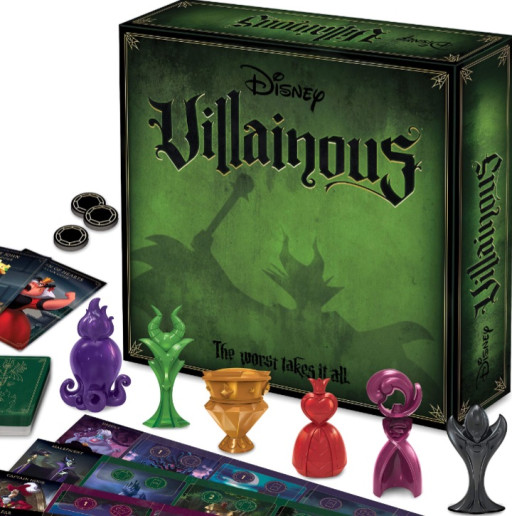
The game where a villain always wins.
Disney Villainous Play:
How To Play Disney Villainous
This game is fascinating in terms of setup and gameplay.
Players take control of 1 of 6 Disney Villains:
- Maleficent from Sleeping Beauty
- Jafar from Aladdin
- Captain Hook from Peter Pan
- Queen of Hearts from Alice in Wonderland
- Prince John from Robin Hood
- Ursula from The Little Mermaid
Each character has its own game board, fate deck, villain deck and 3D character.
Based on the character selected, there is a goal to achieve in order to win. This is one of the main things that sets this game apart from other board games. Everyone has a different objective to achieve.
Players take turns moving their characters to a different location on their own board. When you move you take one or more actions by using the cards in your hand. Cards can be allies, effects, items and conditions. For some villains cards can be curses too.
You must use your own unique cards in order to achieve a specific goal that wins you the game.
But you can also stop other players from achieving their own goals. Some actions allow you to select 2 cards from an opponent’s fate deck and choose one to play against them. The fate decks contain heroes, items and effects from that particular villain’s world.
So Prince John would have Robin Hood in his fate deck as a hero, for example. These cards stop your opponent from achieving his goal which makes the game fun and interesting.
Did you know that Disney Villainous was awarded Game of the Year in 2019 at the Toy of the Year Awards? Play the game with your kids and you will see why!
Here are 6 reasons to play this game with kids:
- For those who love Disney it’s another area of that world to explore and enjoy.
- The game can teach kids to think outside of the box and get creative. This game has different objectives for each player but yet it works well to tie the whole game together. Kids can be encouraged to think of different ways of doing something that’s familiar.
- It’s a game of strategy which helps kids to solve problems and think critically.
- This is a game of focus. Kids need to pay attention to many things at once - their objectives, other players’ objectives, how to come back from a setback, for example.
- This game helps children to be responsible. They need to take care of the different parts and understand that everything has its own place. This can help them understand that the same works for chores in the home.
- This game helps with Reading and Comprehension. Kids need to read their cards, figure out what they mean and how to use them.
1. Catan
For 3 - 4 Players in the standard version; 5 - 6 Players with expansions
Ages 10+
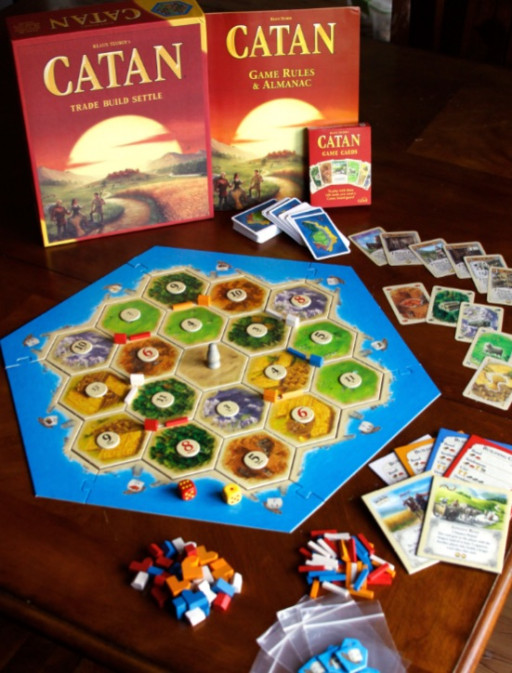
Pardon me while I claim my realm.
Catan Play:
How To Play Catan
This game has a brilliant concept.
The board itself is made of hexagonal tiles called hexes. These are removable and can be placed in any position at the start of a new game. You can also expand the game for a bigger board and for more players to join in.
A board game that changes each time you play makes for endless fun and possibilities when playing.
There are some versions though, that have the layout printed so that it is the same for each gameplay. If you have a preference for one version, make sure that you check carefully before buying.
Catan is based on a made-up island. Each player’s job is to establish settlements, cities and roads in order to be the Lord of Catan.
There are different land types such as hills, forests, fields, pastures and mountains.
These land types produce resources which are used for building your Catan kingdom:
- Hills produce bricks.
- Forests produce lumber.
- Fields produce grain.
- Pastures produce wool.
- Mountains produce ore.
Numbered discs (2-12) are randomly placed on each land type.
Players take turns selecting a point where 3 hexes meet and lay 2 settlements each at the start. From there, they build and extend their starting settlements to increase their kingdoms.
During play, players roll the dice. The numbers rolled correspond with certain land types. The players with settlements on those land types get the resources which the land produces.
So let’s say a 6 is rolled, for example. A mountain hex has a 6 disc on it. Since mountains produce ore, whichever players have a settlement touching that mountain will get some ore added to their resources.
But there’s also a desert wasteland that produces nothing. At the start of play, a ‘robber’ sits in the desert. Players who roll number 7 can choose to place the robber on any land type of their choice. That land type can no longer produce resources until the robber is moved to another hex.
Also, players who have 8 or more resources when 7 is rolled lose half of their cards. They must now hope that the roll of the dice makes them rich again.
There are cards which help you to gain advantages in the game. You keep building until the first player reaches 10 points.
Here are 5 great reasons to buy this game for kids:
- It’s a game of strategy which helps children to think critically and solve problems.
- This game is an excellent example of thinking outside the box which can help kids be more creative in their own thinking.
- This game is great for helping kids develop social skills as they win and lose, learn to be good sportsmen and take turns.
- Catan is great at giving kids responsibility. There are different game pieces which must be cared for and replaced correctly after gameplay.
- This game is lots of fun for the family which helps kids strengthen bonds with family members.
And there you have it.
Fifteen fun board games to play with your kids and great reasons why you should buy them.
You May Also Be Interested In:
21 Best Board Games For PC Gamers
The 21 Best Online Strategy Board Games

